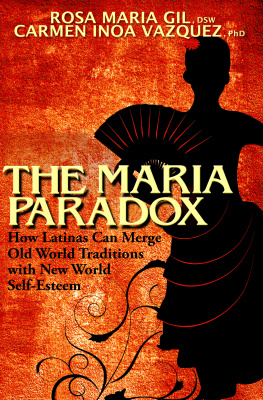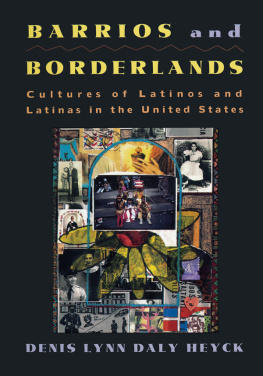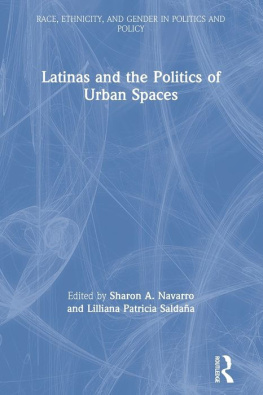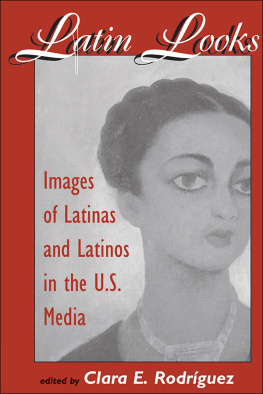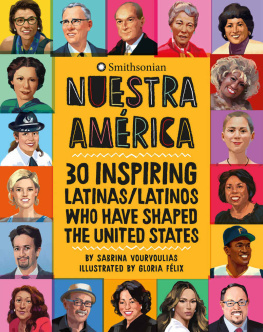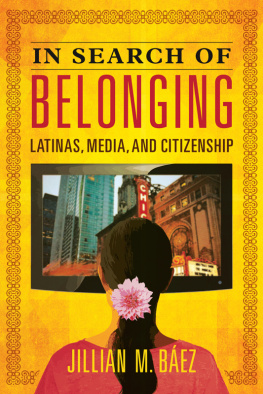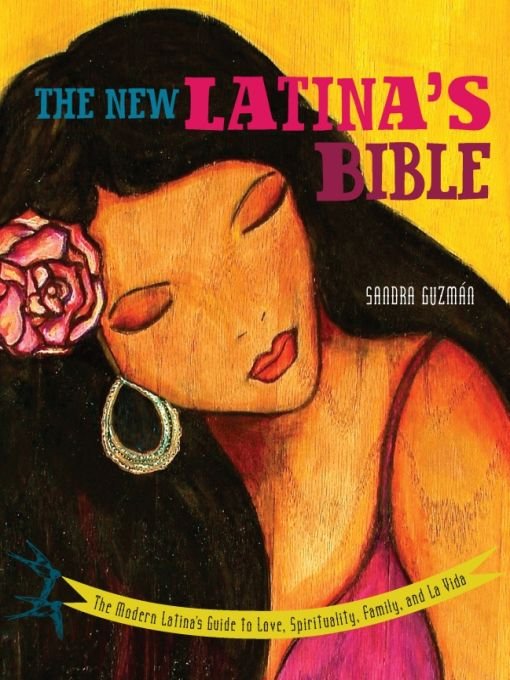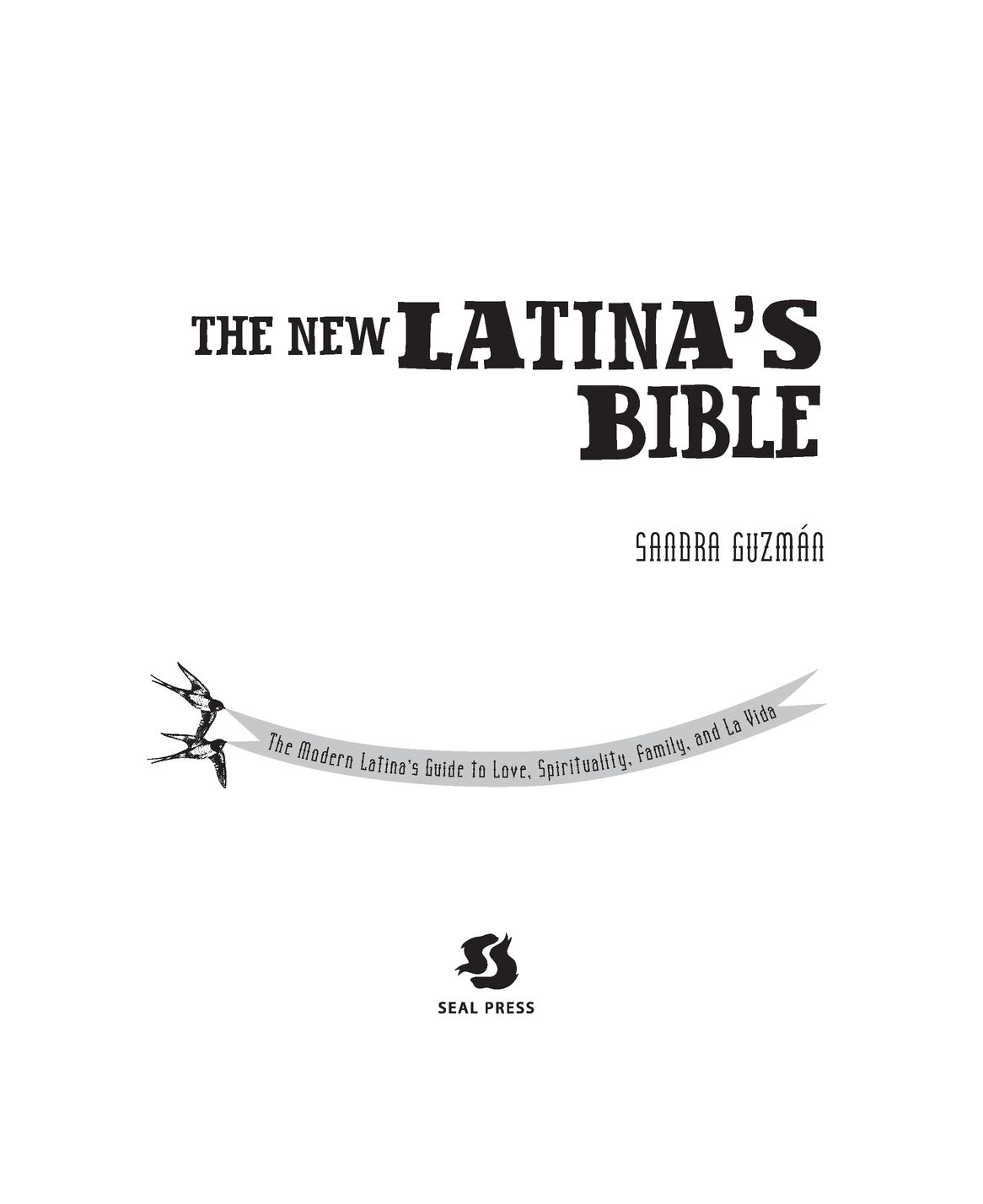Table of Contents
This book is dedicated to my mother, Lydia Gonzalez Santos, who gave me milk and honey.
Mami, you taught me the most important lesson any woman ever needs:
That I am the owner of my body and future. Bendicin. Te amo.
INTRODUCTION:
THE JOYS OF BEING A MODERN LATINA
When I despair, I remember that all through history the way of truth and love have always won. There have been tyrants and murderers, and for a time, they can seem invincible, but in the end, they always fail. Think of italways.
MAHATMA GANDHI
DONT FOR A minute let the hate you are hearing over the airwaves about Latino immigrants seep into your ears and infest your soul, my beautiful seoritas. Latinos and Latinas are an exquisite and elegant people, with a rich and dazzling culture. Its not about convincing others of this fact, rather, its knowing it yourself.
Haters are trying to suck my joy out of being Latina. And its left me feeling a bit like Kermit the Frog. Remember how the Sesame Street muppet lamented how it was not easy being green? I feel you, Kermit baby! Its difficult being Latina in America today. How can I find pleasure in all the beauty that I am, that we, collectively are, when we are under constant attack? Laws that stand to violate the very core of the countrys foundation are being enacted. A group of U.S. senators are seeking to amend the constitution so that all those Latinas who drop and leave babies, to quote South Carolina Senator Lindsey Graham, will stop coming to this country to birth their brown children.
The voices of hate and intolerance speaking over the airwaves want us to go away. It doesnt matter if your grandparents called this land home before the Mayflower landed; if you are a Gonzalez or a Garcia, a Lopez or a Martinez, youweare being ethnically and racially profiled. The attacks are worse in some pockets of the nation than in others. If you are not feeling the ire of the xenophobes, perhaps because you pass as someone who does not look Mexican, count yourself lucky, because pretty much everyone else does feel it. In this beautiful nation of ours, Latinos are seen as invaders, and that is not good for the individual or collective soul.
Today, more than ever before, its important to surround yourself with people, media, films, books, and moments that uplift you. I am elated that you picked up this bookmy ode to you, to us, to our individual and collective exquisiteness. I want you to understand that your heritage, looks, culture, intellect, and our Pan-Latino nation is filled with beauty and talent, power and intelligence. This is not my opinion. It is a fact. You are not what the haters say you are; rather, you are what you believe you are.
Nine years ago, when the first version of the book you are holding in your hands was first published, America seemed like such a different place. Today, America has moved passed the color line and elected a black President, Barack Obama, the son of an immigrant. And, upon his first opportunity to fill a vacancy in the highest court of the land, he picked an intellectual rock star, Puerto Rican New Yorker Sonia Sotomayor. We have universal healthcare and there is a gender parity law in the books! So while on the one hand, the airwaves are clogged up with intolerance, the ball is being moved forward more and more toward fulfilling Americas promise.
Sentiments I wrote in the original version of this book continue to ring true: I am a proud Latina. I am a proud American. I am not exotic. I am two cultures in one caf-con-leche body. I own English. I dream in Spanish. On most days, Im delighted to explain this marvelous heritage to the curious and clueless who ask questions like, So Sandra, what are you? Other days I just repeat to myself, I am what I am.
I decided that this book needed to be updated, and what you are holding in your hands is a new and improved version of my original Latinas Bible. Yet the core of its message is the same: to love yourself deeply is the beginning of a healthy, joyous experience on earth.
As a Puerto Ricoborn and U.S.raised woman, I am layers of history that speak of beaches and snowflakes, rain forests and tenements, Spanish and English, spicy food and fast food, hip-hop and congas, apple pie and flan. I have two homesan America that sometimes refuses to accept me as a legitimate daughter, and a Puerto Rico that sometimes denies me when my Spanish fails me.
For as long as I can remember, I always yearned to belong neatly to just one of them. But greater forces were at play. Puerto Rico is a U.S. territory with unresolved political and identity issues that date back to the moment Columbus and his gang of henchmen landed on the beautiful Borinquen. Puerto Rico is neither a state nor a sovereign nation, but an in-between political entity called a commonwealtha euphemism for colony. The island is still trying to answer profound political questions about who it is as a nationas a people and as a collection of individuals. We are simultaneously part of the United States and a member nation of the twenty countries that make up Spanish-speaking Latin America. When I think of Puerto Ricos political dilemma, I am reminded of an old Mexican saying: Poor Mexicoso close to the U.S., so far from God.
Immigrant parents send their children to school (simply, they think) to acquire the skills to survive in America. But the child returns home as America.
RICHARD RODRGUEZ, DAYS OF OBLIGATION: AN ARGUMENT WITH MY MEXICAN FATHER
I am a Latina who was born into a borderland and raised in a cultural middle. When I was a little girl, my familymy mom, two sisters, and two brothersmade its way north. My mother was a seamstress, but when the factory where she made sneakers (Pro-Keds) closed down, she packed up suitcases full of tropical clothes and we left El Tuque, the small fishing village we called home. We moved to the immigrant working-class town of Jersey City, New Jersey, where some of our other relatives had settled years earlier. Some say that the best thing Jersey City has to offer is a view of Manhattan, but it was there that I became a Jerseyricana combination of American and Boricua from New Jersey.
There was no such thing as bilingual education in my public school, or even English as a Second Language; it was strictly sink or swim. (Ironically, the school was named in honor of Rafael Cordero, a Puerto Rican artist and educator. Go figure!) But as the daughter of strong and clever people, I learned English quickly. Unfortunately, I also learned to forget Spanishthough I picked up a lot of Spanglish. Lunch, for example, became lonche; roof, rufo; the buildings superintendent, el super.
COMADRE CONNECTION
There are a total of 140,154,000 women in the United States
98,584,000 are non-Hispanic white
25,201,000 are non-Hispanic other
16,369,000 are Latinas.
There are 16,369,000 Latinas
10,582,000 are Mexican
2,526,000 are Central and South American
1,496,000 are Puerto Rican
669,000 are Cuban
1,095,000 are other Hispanic
30% of the Latina population is under fifteen years old
70% of the Latina population is fifteen years and older
The biggest single group is thirty-five- to forty-four-year-old Latinas who comprise 15.2% (2,493,000) of the Latina population.



